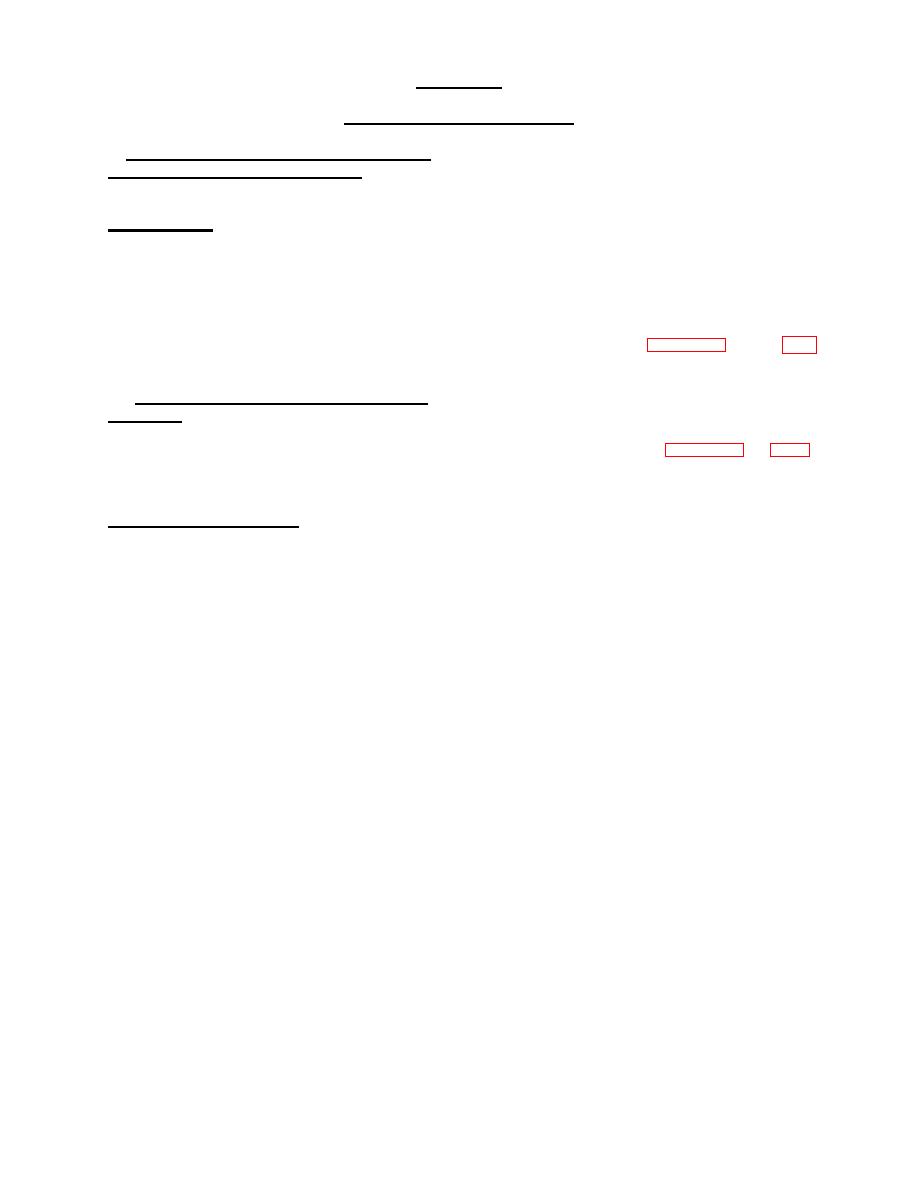 |
|||
|
|
|||
|
Page Title:
CHAPTER 3. MAINTENANCE INSTRUCTIONS |
|
||
| ||||||||||
|
|
 CHAPTER 3
MAINTENANCE INSTRUCTIONS
Section I - GENERAL MAINTENANCE INFORMATION
3-1.
SPECIAL TOOLS AND EQUIPMENT - No special tools are required for the pumping units covered by this
manual. Maintenance can be performed with the tools normally found in any maintenance tool box.
3-2.
LUBRICATION
A.
Engine - Refer to TM 5-2805-259-14 for lubrication of the engine.
B.
Pump - The pump requires no lubrication as the ball bearing is sealed with sufficient grease for the life of
the bearings.
C.
Trailer - The wheel bearings are the only item on the trailer that requires lubrication. Unless subjected to
severe or unusual service, wheel bearings should be lubricated every 6 months. If unit is frequently moved, the wheel
bearings will require more frequent lubrication. During inactive periods, sufficient lubrication must be performed for
adequate preservation. Relubricate wheel bearings after washing or fording. Refer to para. 3-16. D and 3-16. E, for
detailed disassembly-assembly and lubrication instructions. Use grease conforming to IL-G-23527.
Section II - PREVENTIVE MAINTENANCE SERVICES
3-3.
GENERAL - To insure that the pumping assembly is ready for operation at all times, it must be inspected
systematically so that the defects may be discovered and corrected before they result in serious damage or failure. The
necessary preventive maintenance services to be performed are listed and described in para. 3-5 and 3-6. Defects
discovered during operation of the unit shall be noted for future correction, to be made as soon as operation has ceased.
Stop operation immediately if a deficiency is noticed which would damage the equipment if operation continues.
3-4.
FREQUENCY OF SERVICE
A.
Keep in mind that daily and quarterly maintenance schedules can only serve as a guide to the frequency of
maintenance services. Frequency will be determined by the field service conditions. The following guidelines will prove
helpful in avoiding loss of efficiency or damage to the unit through neglect.
1.
If the unit is towed frequently or is subjected to conditions that induce excessive vibration,
fasteners will require more frequent tightening.
2.
Avoid mud or sludge build-up in the pump casing, as this will cause loss of efficiency and increase
wear.
3.
Air entering the pump through the suction line can cause the pump to stop delivering water.
4.
The impeller requires running clearances of .008 - .015 on the face and .015 - .035 on the shroud.
Any appreciable variances in the running clearances will change the performance of the pump. Greater
clearances will reduce the flow rate and discharge head and will also effect the priming, and if sufficiently great,
the pump will not deliver any water. Reduced clearance may cause unnecessary wear and require added
horsepower. The shaft of the pump, with its ball bearings, operate in a fixed position; but, this position of the
impeller can be adjusted by installing or removing shims between the hub of the impeller and the shoulder of the
shaft.
5.
The mechanical seal is in the pump to prevent leakage of air or water around the shaft, which may
cause the unit to stop pumping.
-11-
|
|
Privacy Statement - Press Release - Copyright Information. - Contact Us |